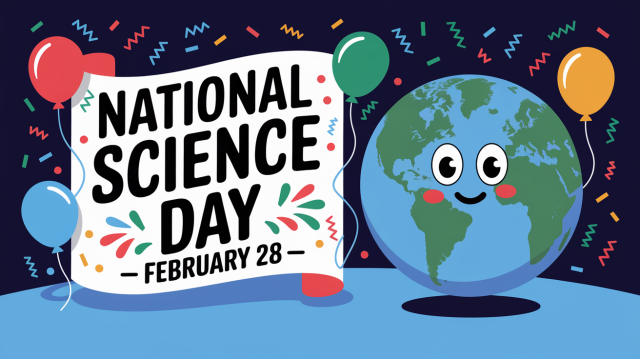Every year, February 28 marks a special day for science enthusiasts, researchers, and innovators across India. National Science Day is a time to recognize the achievements of Indian scientists and their invaluable contributions to the global scientific community. But why February 28? What makes this day so significant?
Why is National Science Day Celebrated?
The history of National Science Day dates back to 1928, when the brilliant physicist Dr. C.V. Raman discovered the Raman Effect. This groundbreaking work earned him the prestigious Nobel Prize in Physics in 1930, making him the first Asian to receive this honor. To commemorate this monumental discovery and celebrate India’s rich scientific heritage, the Indian government designated February 28 as National Science Day in 1986.
The Significance of National Science Day
National Science Day is more than just a celebration of one scientific breakthrough—it’s a day to foster a spirit of inquiry, inspire young minds, and highlight the pivotal role of science in shaping our world. The theme for each year is thoughtfully selected to address contemporary issues and encourage innovation. In 2025, the theme revolves around “Advancing Frontiers in Green Energy and Sustainable Development”, reflecting the global need for eco-conscious scientific solutions.
How Do We Celebrate National Science Day?
Across India, educational institutions, research centers, and science museums host a variety of events to mark the occasion. These include:
- Science exhibitions and fairs showcasing innovative projects by students and researchers.
- Workshops, lectures, and panel discussions featuring eminent scientists.
- Competitions like quizzes, debates, and essay-writing to engage young learners.
- Public outreach programs to spark curiosity and make science accessible to all.
The day is also an opportunity to honor scientists whose work continues to inspire and impact society, raising awareness about the importance of research and development.
Fun Facts About National Science Day
- Dr. C.V. Raman’s discovery of the Raman Effect was made using a simple spectroscope and sunlight—proving that great discoveries don’t always require sophisticated equipment.
- The Raman Effect has applications in diverse fields, from medical diagnostics to space exploration!
- India ranks among the top nations in scientific publications, with a rich legacy dating back to ancient texts like the Vedas.
A Call to Action for Science Enthusiasts
National Science Day is not just about looking back at past achievements; it’s about envisioning a brighter, more innovative future. Whether you’re a student, teacher, or science enthusiast, take this opportunity to explore the wonders of science. Attend a local science fair, try a DIY experiment, or simply share an interesting scientific fact with your friends and family. Let’s celebrate the spirit of discovery and innovation together!
As we honor the legacy of Dr. C.V. Raman and countless other scientists, let’s pledge to make science a force for good in our world. Mark your calendars for February 28, 2025, and join the celebration of knowledge and progress!












